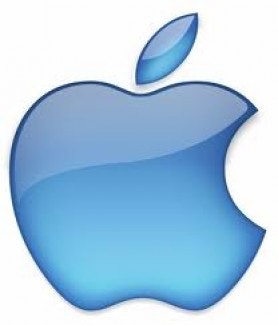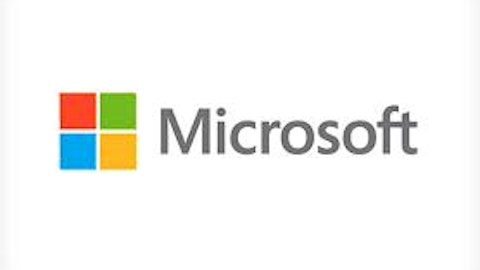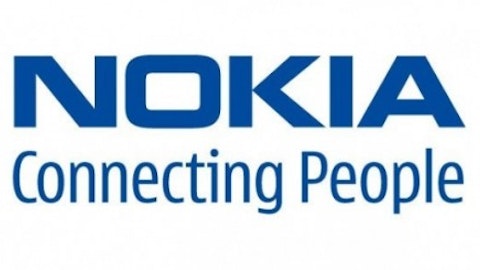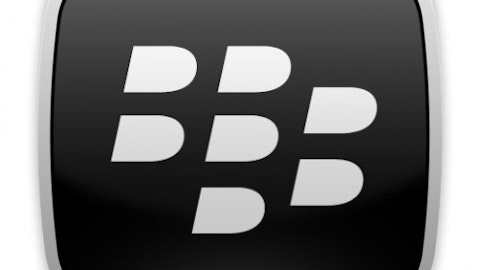
Cook’s people deftly managed expectations for the quarter down to a level they could beat, then beat it decisively. This masked the fact that the company only matched last year’s $35 billion in sales and that earnings actually fell $2 billion, from $9 billion to $7 billion.
The key point about the release was the unexpected strength of the iPhone line. Sales for iPhone were up 20%, to 26 million, while sales for the iPad were down in big competition from Samsung Phablets and Amazon.com, Inc. (NASDAQ:AMZN) Kindles.
The next step
Since it became clear iOS will not dominate Android as was once hoped, Cook has turned Apple from a growth story into a value story. Investors are only willing to pay 11 times its trailing earnings, but an active stock buyback program and a $3.05 dividend give them a yield of 2.78% and limit their downside risk considerably.
As a result, the “beat” on earnings sent the stock soaring $20/share in early trading. Those who got in when the gloom was blackest are looking to be in good shape.
What investors really need to focus on is this fall’s product announcements. A cheaper iPhone, with less memory and a plastic case, is expected. So is something to compete directly with the Phablet, whose 7-inch screen is big enough for watching TV while small enough to fit in a pocket and be used as a phone. These are key advantages in Asia, where consumers can’t afford both a tablet and a phone, and where price matters.
Assuming these matters are dealt with – and Apple Inc. (NASDAQ:AAPL) under Cook has been a much more methodical, logical company in terms of its product roadmap and treatment of investors, the next question is whether the company is capable of creating a new product category. That’s speculative. But even a little hype from an announcement could lead Apple to $500, which would bring its Price/Earnings (P/E) multiple into line with its chief competitors.
Et tu, Microsoft?
Chief among these competitors is Microsoft Corporation (NASDAQ:MSFT), which over the last year has become a primary alternative investment.
After disappointing on its most recent quarter, Microsoft is selling at a P/E of 12.38, little removed from Apple Inc. (NASDAQ:AAPL)’s 10.95. To the layman, the numbers generated by the two companies seem out of skew, but Microsoft Corporation (NASDAQ:MSFT) has over 8 billion shares outstanding, Apple less than 1 billion, so a little long division should get you to value.
The two companies now have relatively similar debt loads, but it should be noted that Apple Inc. (NASDAQ:AAPL)’s debt pf $17 billion was taken out to fund its stock buyback, and it’s actually making money on that borrowing since it keeps the dividend rate high. Microsoft’s long-term debt total is $12.6 billion, but it is not managed in the same way or for the same purpose.
Both Apple and Microsoft Corporation (NASDAQ:MSFT) are huge generators of cash, but Apple generates more, even in its present condition, and Microsoft’s numbers are still paling. Apple Inc. (NASDAQ:AAPL) is 75% bigger on the top line, 40% bigger on the bottom line. The only advantage Microsoft has at the present time is that its margins are fatter, albeit marginally.
The main difference between the companies, from an investor’s perspective, is that Apple’s iOS is earlier in its life cycle than Microsoft Corporation (NASDAQ:MSFT)’s Windows. Apple is better at monetizing its iOS user base than any other vendor, while Microsoft’s cash cow is drying up, and there is nothing on the horizon that looks nearly as profitable.
Google, then?
Google Inc (NASDAQ:GOOG) looks like a better company right now than either Apple Inc. (NASDAQ:AAPL) or Microsoft Corporation (NASDAQ:MSFT), but that goodness comes at a price.
Investors are paying nearly 28 times earnings for Google shares, which are regularly flirting with all-time highs. That’s more than twice what is paid for earnings in either Microsoft or Apple Inc. (NASDAQ:AAPL).




